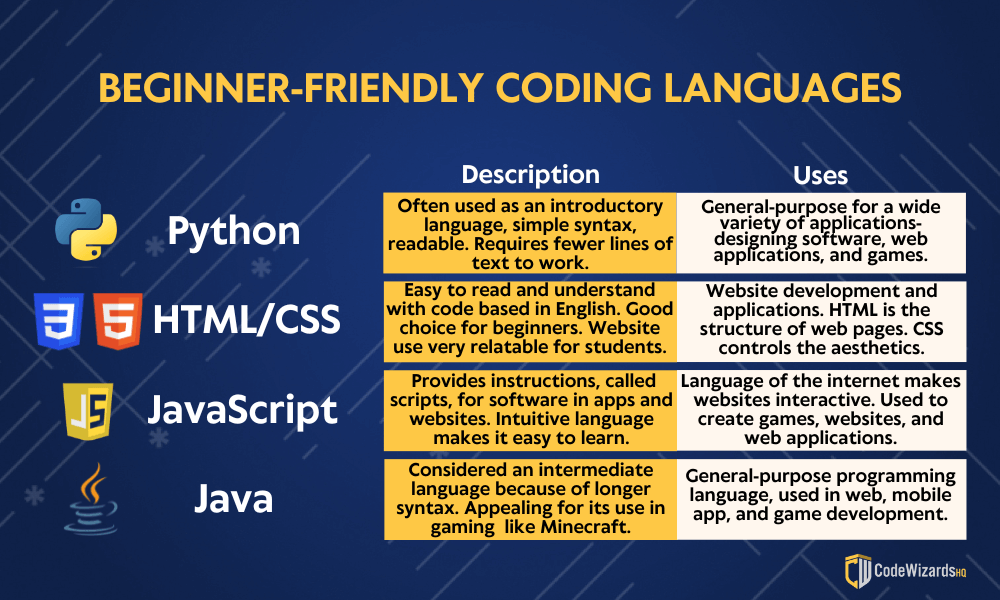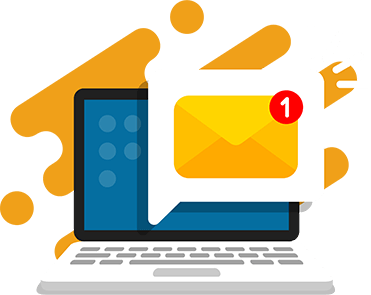Coding has become a crucial skill for kids and teens. From technology to science and business, learning to code can enhance college and job prospects as well as earning capabilities. As a result, coding education for children has transitioned from a novel elective to an indispensable skill.
For homeschooling parents, the decision to incorporate coding into their curriculum isn’t about “if” but “when.” With or without formal training or experience in the subject, parents may find the idea of teaching coding intimidating. Fortunately, there are countless options today for integrating this vital skill into your curriculum, and this step-by-step guide is designed to help you make informed choices to confidently add coding skills to your homeschool at any age. Let’s get started!
Foundational Skills for Preschoolers
Like any other subject, parents can begin laying the groundwork for their child’s coding education as early as preschool. Skill-building activities help promote those important critical thinking skills, and as a bonus, your child is sure to love them.
Skill-Building
- Beginning logic
- Problem-solving
- Pattern recognition
The foundation for coding starts with learning how to apply logic, problem-solve, and recognize patterns. If-then or conditional statements integral to programming are part of everyday life and preschoolers are already on their coding journey when parents incorporate statements like, “If you clean your room, you may have ice cream.” Children as young as three can be introduced to programmatic thinking through simple activities, games, and toys.
Activity Ideas
- Old-school games like tic-tac-toe, mother-may-I, and Go Fish
- Jigsaw puzzles
- Interact with open-ended questions
- Asking children to predict outcomes and make comparisons
- Group and pretend play
- Teaching cause and effect
Coding toys are fun additions to your toolbox and are especially beneficial because kids are learning coding skills by doing something with their hands. Hands-on learning is recognized to increase attention span and fine motor skills. These toys can be introduced as early as age 3 and increase in skill level through the teen years and beyond.

Coding Skills for Early Elementary
With some basic logic and critical thinking developed, older children can start to master algorithms, sequences, and more complicated pattern recognition. They’re even ready to start basic block-based coding!
Skill-Building
- Understand and practice algorithms and sequence skills
- Complex pattern recognition
- Basic keyboarding
Algorithms and Sequences
Programmers use step-by-step instructions called algorithms to tell the computer what to do. Young children can begin to understand these algorithmic cause-and-effect relationships. Start by getting them to think about activities that have a pattern of sequences. Documenting the steps of making a sandwich is a great exercise. Have your student list all the instructions for making a sandwich. Then, make the sandwich, following the instructions exactly in the order, or sequence, of individual tasks. If it turns out as intended, the instructions succeeded. If not, it’s time to go back and reevaluate the code, just like a programmer!
Other algorithmic exercises can be introduced as part of your daily homeschool routine. Anything is fair game as long as there is a certain order or sequence of steps.
- Getting dressed in the morning
- Game instructions
- Feeding a pet
Don’t forget to follow the steps precisely to see if the algorithm works. If it didn’t go as planned, it’s time to introduce your homeschooler to debugging, a task that teaches perseverance, patience, and problem-solving.
Pattern Recognition
Pattern recognition is at the heart of programming. Binary code itself is a pattern and coders need to use and compare patterns to tell computers what to do. Working with your homeschooler with patterns can set the stage for early math as well as programming success.
Skill-Building
Use LEGOs to create and recreate patterns of colors and sizes. As your child gets accustomed to that exercise, assign each brick a letter: yellow cubes = A, and so on. Spelling names or even whole sentences with these coded LEGOs can teach the types of representative concepts used in programming.
- Download coloring printables that focus on pattern recognition.
- Jewelry making has endless opportunities for pattern exercises.
- Create patterns with stickers, stamps, playdough, etc.
These fun activities for the early elementary years can be integrated into your daily homeschool routine and lay the foundation of the principles for the next steps in teaching computer programming in your homeschool.
Recommended: Typing Apps for Kids
Block Coding for Homeschoolers
If your child is ready and interested, many experts believe that the best way to introduce programming is with block coding. With visual block-based coding, your child uses blocks of language on a computer or a tablet. The blocks have instructions, and the student drops and drags them with a finger or a mouse. The pre-formed blocks can be arranged to create games and animations.
Block-based coding will get your homeschooler used to the structure of programming without the frustration of getting text exactly right. It leaves more time for creativity and concepts. One of the best and most popular block-based platforms is Scratch. Your homeschooled student can create interactive stories, games, and animations by logging onto the Scratch website for ages 8-16 or Scratch Jr. for 5-7-year-olds. Developed by the Lifelong Kindergarten Group at the Massachusetts Institute of Technology, it has over 103 million registered users and 125 million shared projects. Best of all, it’s absolutely free.
Programming in Scratch offers a straightforward and fun introduction to coding, particularly suited for children. With no setup, downloads, or waiting required, kids simply need to create an account to dive right into coding fun. Need a little help getting started? Your child can follow one of these tutorials from CodeWizardsHQ.

Text Programming for Homeschoolers
As your homeschooler masters block coding, they might be eager to try text-based programming. How will you know if they are ready to make this leap? They should be comfortable with the keyboard, have basic logical thought, and have the ability to focus for longer periods on small details. This is true teach-to-their-interests time, and learning should stay fun and engaging.
As you investigate text-based programming options, you might see references to specific programming languages like Python, JavaScript, HTML/CSS, and Java. It’s difficult to know where to begin, but whichever language is your child’s first, there are a few guidelines that will help with long-term success.
- Begin with one language and grow with it. Once your homeschooler knows one language well, it is much easier to learn the syntax and conventions of other languages.
- Make sure that they start with very basic programs so that they don’t get frustrated early on.
- It’s a good time to build a little structure around programming, just as you would for any other core subject, by setting aside a few hours each week to learn and practice.
- Like any other subject, let your student’s learning style dictate the kind of programming instruction that is best suited for them.
Ultimately, the language isn’t as important as learning the concepts of programming, but there are still the best choices for beginners.
Best Programming Language for Beginners
- Python is considered one of the easiest coding languages to learn and is often used by students as their introductory language. Python requires fewer lines of code to work, has simpler syntax, and is very readable. Students can learn basic coding concepts without being overwhelmed by how to write code. Python is a general-purpose coding language and is used for a wide variety of applications, like designing software, web applications, and games.
- JavaScript is another great choice for beginners. JavaScript is the programming language of the internet. It’s the language that makes websites interactive. It can be used to create games, websites, and web applications. Its intuitive syntax makes it an easier language to learn.
- HTML/CSS (HyperText Markup Language) and CSS (Cascading Style Sheets) are both used in website development and applications. HTML can be thought of as the structure of web pages, while CSS controls aesthetics like font type, size, and background colors. If your homeschooler is interested in web development, seek a program that includes HTML/CSS and JavaScript.
- Java is considered an intermediate language because of its longer syntax requirements. Java requires more coding to do the same thing that Python does. That makes Java faster, but it has a somewhat steeper learning curve for beginners. However, Java will appeal to kids because it is used in gaming programming, specifically Minecraft. The ability to program video games often serves as a powerful incentive to learn coding, and quite a few kids and teens begin programming in Java. Like Python, it is a general-purpose programming language and has uses in web and mobile app development.

Coding Instruction for Homeschooling
If your homeschooler is just getting started with text-based languages, free online learning sources can be a good way to see what it’s like and if he or she enjoys it without obligation. While these classes are not enough on their own to master programming skills, they’re worth checking out for beginners.
- Codeacademy’s courses cover how to build a website and related programming languages, including HTML/CSS, Python, JavaScript, and SQL. Codeacademy is easy to use; however, course materials are all text-based, which might be less engaging for younger programmers.
- Khan Academy is a resource familiar to homeschoolers. Khan Academy offers courses in JavaScript, Processing JS, HTML/CSS, JavaScript, and SQL. Instead of their usual video presentations, they use “talk-throughs,” which are more interactive. With a talk-through, the student can pause the video and “play” with the code listed on the screen.

Coding Classes at Home
If your student has enjoyed their initial experiences with programming and is ready to learn more, an online coding school can be an especially good choice. A small group method of instruction with a live teacher gives kids a more comprehensive curriculum while also getting to interact with their peers. Feedback from teachers in real time allows for a higher learning quality and less frustration. This form of instruction can help introduce homeschooled students to different teaching styles, work deadlines, and goals. It also takes the guesswork out of what to learn next.
When choosing a program, it’s important to do a little research first and consider the following:
Value
The price of coding classes varies widely, from free to several hundred dollars monthly. It’s important to look beyond just the cost and consider the value of the investment. A high-quality coding education is an investment in your child’s future, one that can yield tangible results.
Active Learning
Top coding schools typically adopt a student-centered, active learning approach in their teaching methods and styles. This active learning approach immerses students more deeply in the material, fostering a comprehensive understanding. High-quality programs provide opportunities for students to customize and showcase their projects while practicing skills, with minimal reliance on lectures.
Curriculum
The most effective coding curriculum builds progressively, guiding students through a sequence of age-appropriate courses that cumulatively enhance their skills. This structured continuity provides a dependable routine that is crucial for meaningful learning.
Instructor/Student Ratio
Class sizes can significantly affect learning outcomes, making them a crucial factor to consider when choosing a coding class. High-quality coding classes often maintain small class sizes to ensure that each student’s individual needs are addressed.
Instructor Quality
Quality coding classes should mandate comprehensive background checks for all instructors. A reputable coding school will also thoroughly assess each teacher to ensure they possess the necessary experience, knowledge, and enthusiasm to provide a positive learning experience for students.
Out-of-Class Support
Children learn at different paces, and it’s crucial that they have access to learning assistance when needed. A high-quality coding class will provide extra support for students who are struggling or need to catch up after missing a session. This additional help should be readily available and easy to schedule at times convenient for the student.
Coding is Fundamental
A comprehensive homeschool curriculum is not complete without coding instruction. Today’s students will be expected to have at least basic programming skills to navigate college and the job market. In addition to computer programmers, jobs like data analysts, artists, scientists, and engineers will incorporate programming into their work. Fortunately, the ability to include programming instruction in your homeschool curriculum is easier than it’s ever been with resources that will fit every learning style. Programming is a lifelong skill that you can confidently include in your homeschool to prepare your child for success in the digital age.
